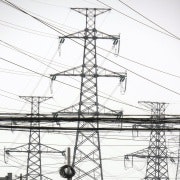We can't afford to ignore energy 'demand response' again
With current restrictions on demand response, our wholesale energy market is distorted – and consumers pay the price.
Readers with good memories might recall a couple of articles from this time last year about the proposed Demand Response Mechanism (DRM): one from AGL saying that it's complicated and expensive, and my response highlighting the errors in AGL's analysis.
The DRM is a reform that's good for consumers but the energy retail and generation sector feels threatened by it – it's competition, after all – and wants it stopped.
Last December, the gentailers prevailed: through a well-resourced, behind-the-scenes lobbying campaign, they persuaded ministers to delay the reform by a further year with (another) cost-benefit analysis.
Ministers meet again tomorrow to decide on the fate of the DRM, so it's timely to consider a few of the questions that have been raised about it:
Why introduce the DRM now, when we have too much generation today?
The current oversupply of generation is a short-term anomaly resulting from historical incorrect demand forecasts. With time, uncompetitive generation will be retired. And with all the intermittent generation that has been installed in recent years, prices may become more volatile than before, heightening the need for demand response.
As consumers have learnt the hard way through higher bills, it's not cost-effective to meet peak demand through supply-side measures alone. If a DRM had been introduced when it was proposed by the Parer Review in 2002, a great deal of unnecessary investment in generation and networks would have been avoided, saving consumers billions of dollars.
Even the highly conservative modelling done for consideration by ministers tomorrow shows that the DRM will produce consumer benefits that outweigh its costs.
It might seem tempting to hold off on the DRM until we see generator retirements or demand growth. But an effective demand-side measure takes a few years to implement and mature, so delaying the DRM further may mean consumers again miss the opportunity to save billions of dollars.
But are customers actually interested in DR?
Some stakeholders suggest that the reason the National Electricity Market has so little demand response is that customers do not want to participate. But why would consumers on the east coast be less flexible than in Western Australia where, without the same restrictions we have in the NEM, about a 10th of capacity in the wholesale market comes from demand response? In the many other energy markets around the world, where demand response is well established, consumers use energy for similar purposes to here, and are similarly willing and able to adapt their behaviour when the incentives are right.
The problem today is that retailers control the demand response market in the NEM, and most don't offer demand response incentives at all; remember, it's bad for their generation business. Of those that do, it's to a small number of consumers, and the incentive offered is much lower than the spot price for generation. The only other option consumers have to use demand response today is full spot market price exposure for all the energy they consume, which is suitable only for the very brave and deep-pocketed.
The DRM allows a competitive market in demand response services, so consumers can shop around for the best demand response deal, separately from choosing their retail deal. All electricity markets that have reached high levels of customer participation have achieved it through “unbundled” demand response in this way.
Isn't the DRM complicated? Couldn't it be gamed?
The NEM is a laggard in introducing a DRM. While this has been an expensive choice, it does have an advantage: we can learn from others' experiences. The DRM rule change, developed by the Australian Energy Market Operator, does exactly this.
In other markets with demand response, any issues they had in the beginning have been ironed out, and they have a governance regime that is transparent and well-regulated. The DRM borrows from these designs, and is robust; a notable contrast to today's unsolved problem of gaming in the NEM by generators.
But the DRM is for large energy users – will it leave households out of pocket?
No. The Oakley Greenwood modelling – which even they describe as very conservative – and every other bit of credible analysis on DRM to date has found that all consumers will be better off, because of increased competition in the wholesale market and flow-on benefits to networks.
Once again, electricity market incumbents are doing their darnedest to stifle competition by lobbying ministers right up to the eve of a major decision on DRM. The problem the incumbents have this time around is that the analysis they lobbied to have undertaken actually doesn't support their arguments, as it shows that consumers will be better off if the DRM is implemented.
When ministers meet tomorrow, they can be confident that in approving the DRM they are pursuing downward pressure on energy costs for all consumers. In contrast, another delay would mean higher prices as incumbent gentailers continue to protect their patch and lobby away any competition.
Craig Memery is an energy market specialist and consumer advocate at the Alternative Technology Association.













